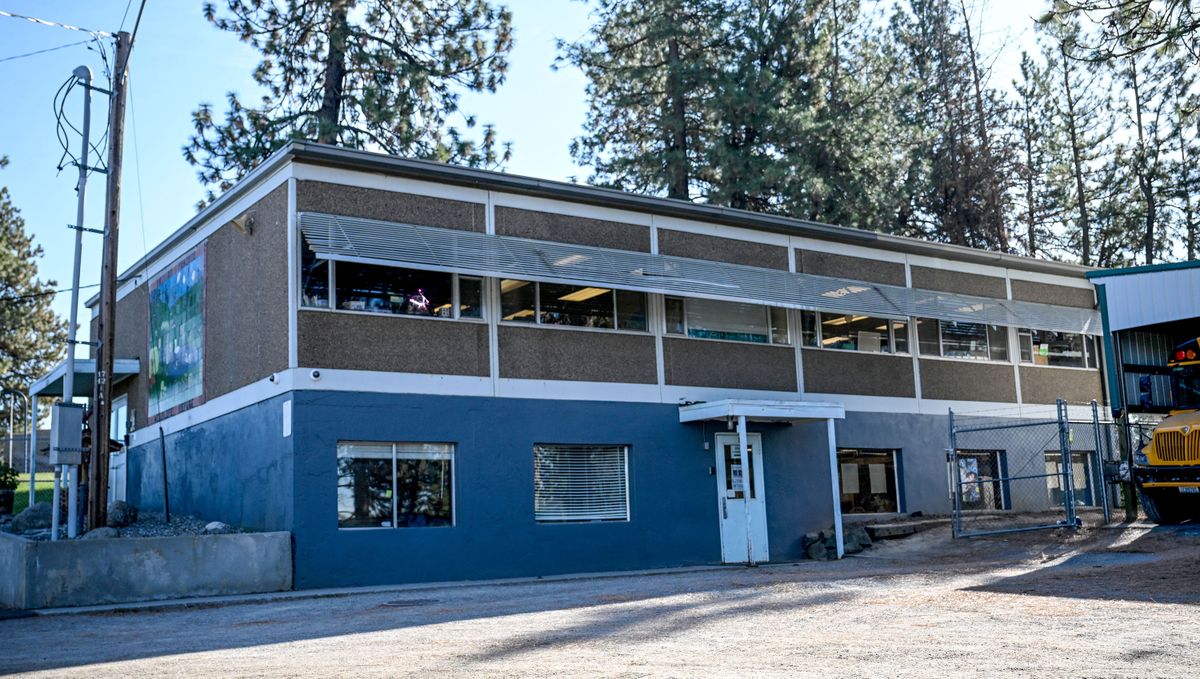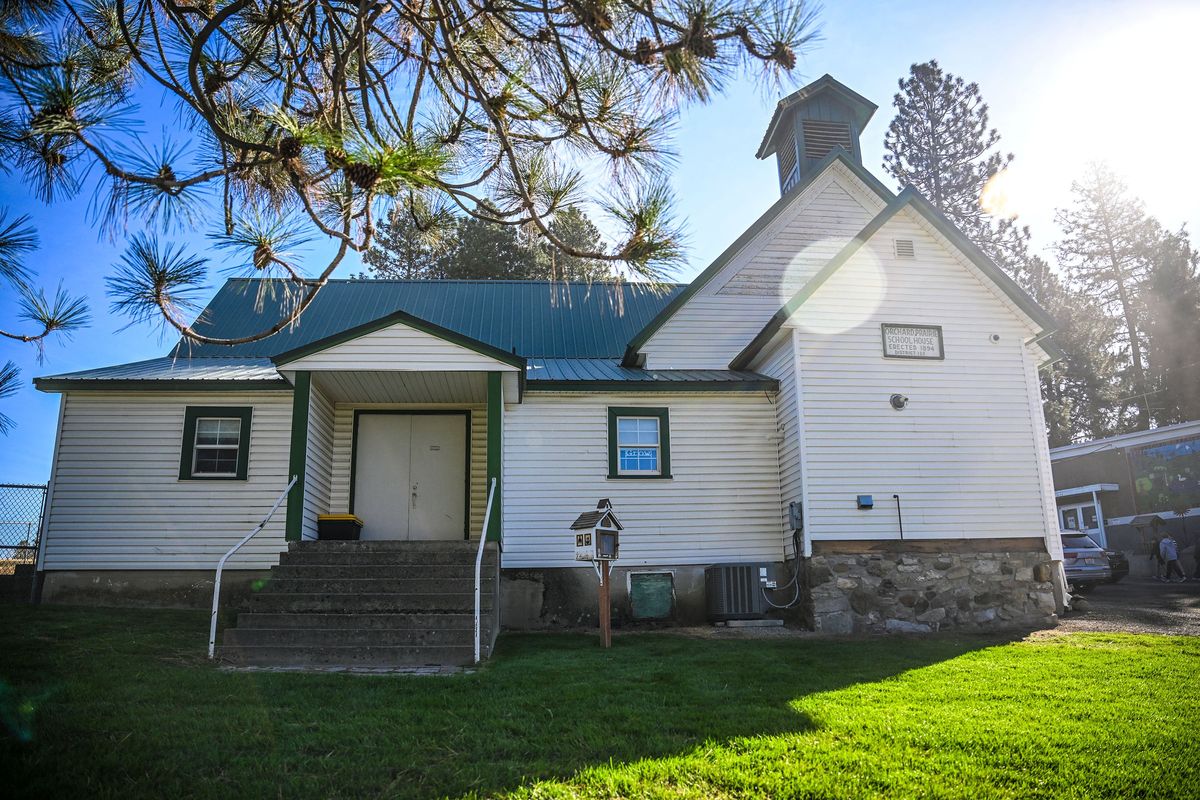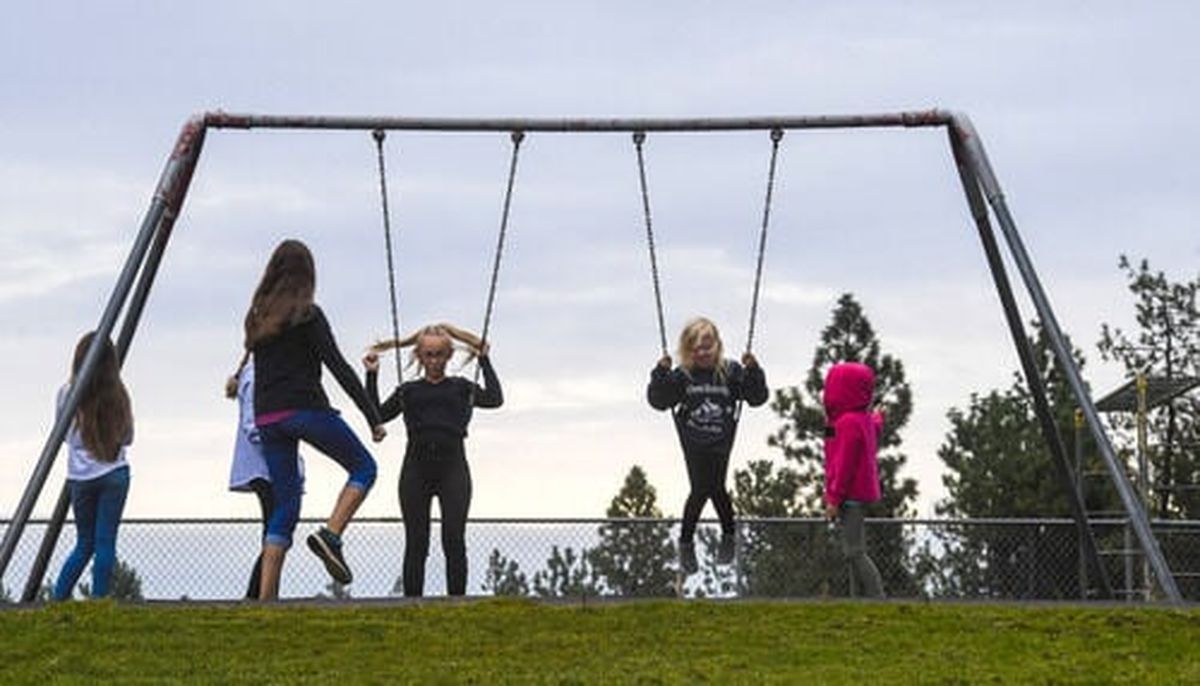Eyeing construction cost increases, historic Orchard Prairie School District asks voters again to pass a bond
Students take to the swing set during school recess in 2019 at Orchard Prairie. (DAN PELLE)
The tiny and historic school district of Orchard Prairie is trying again at passing a bond to build a new school for its 79 students.
A November attempt fell short of the 60% voter support needed by 24 votes, racking up 53% support from the relatively small number of voters who live within the 6-square-mile school district’s bounds.

The new proposal is on the April 22 ballot and would raise $6.2 million to be paid off over 30 years, plus $2.5 million in matching funds from the state. Those funds would be used to construct a new school on their two-school campus, replacing a cramped 1970s building where older students learn. Orchard Prairie’s other building houses younger students; it’s an updated one-room schoolhouse built in 1894, the oldest operating school in the state and would continue to be used. School officials plan to add the original schoolhouse to the Spokane County historic registry.
If passed, property owners in the school district would pay at an estimated yearly rate of $3.27 per $1,000 in assessed property value through the 30-year life of the bond. This rate includes the proposed bond and an existing local school tax levy. Property owners currently pay at a rate of $1.22 per thousand in local school taxes, constituting the district’s educational programs and operations tax levy.
April’s proposal is the same as the details from November, but school officials are hoping a better-communicated campaign will get this bond over the finish line.
“We’ve tried to express the need that we have because of the age of our facilities and the need for secure facilities and new safe space for our staff and our students,” said Katelyn Schuler, school board chair and counselor at the school. “That need can only be met by building a new building.”
Staff make use of just about every inch in the 1970s building, a front desk pushed against the wall in the hallway outside its two classrooms. Rather than a nurse’s office, kids seek treatment in the corner of the intervention room behind a partition, next to two small rooms used for Superintendent and Principal Joseph Beckford’s office and Schuler’s private counseling room in the building’s basement.
Staff and students make use of a general purpose room in their basement to dine, work on some school projects and other outside-the-classroom tasks.
The new building would be built behind the turn-of-the-century schoolhouse. It would be big enough for all classes and a nurse’s office, front office, a single entrance for safety, a multipurpose room and an interventionist room all absent from the existing facility.
Their 1970s school isn’t in compliance with seismic safety codes or accessibility measures outlined in the Americans with Disabilities Act.
To get them up to code in their current building, Schuler said it would cost just about the same to do extensive renovating: installing an elevator, addressing the foundation and increasing bathroom size, among other updates.
“The entire building would essentially have to be gutted and reconfigured,” Schuler said. “The quotes and the information we got, essentially, is it would cost almost the same to remodel the current building, and it wouldn’t address all of the safety issues.”
Though not an imminent threat, Schuler has worries about school district consolidation. If it’s not able to provide a learning space that meets safety requirements and isn’t fiscally sound, Orchard Prairie could be absorbed by a larger neighboring school district.
Schuler has some urgency in getting the bond passed sooner rather than later, as costs for construction and materials are on the rise. Already, the district will have to keep a close watch on its construction budget, Schuler said.
“It is going to be tight. We’re going to have to be very, very conscious of our budget, just because building costs are continuing to increase, and so we’re really hoping that it will pass this time, because if we have to put it on the ballot again in the fall, we will probably have to change the amount, and we really don’t want to have to ask the voters for more.”


